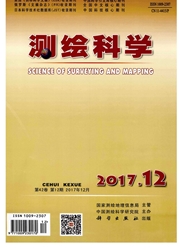

 中文摘要:
中文摘要:
针对多时相夜间灯光影像无法直接对比的问题,该文提出了一种基于不变目标进行不同年份不同卫星夜间灯光数据的校正方法。在系统校正多时相夜间灯光数据的基础上,应用支持向量机分类算法提取城镇用地信息,并分析1992—2013年南京城镇扩张动态变化规律。结果表明:该数据校正方法可以有效减少年际夜间灯光影像之间的异常差异,提高不同年份数据间的连续性和可比较性;支持向量机分类算法提取的4个样区城镇用地信息总体精度和Kappa系数平均值分别为88.35%和0.56,能够准确反映区域城镇发展的实际情况;1992—2013年南京城镇经历先缓慢后快速的扩张过程,主城区在1992年城镇基础上往四周扩张,并沿长江及南北交通走廊发展。
 英文摘要:
英文摘要:
The multi-temporal nighttime stable light data cannot compare directly. In this paper, the invariant region method was used to correct multi-year and multi-satellite nighttime stable lights data. On the basis of multi-temporal nighttime lights images correction systematical, making use of SVM classification algorithm to rapidly extract urban information and analyzing the dynamics of urban expansion of Nanjing from 1992 to 2013. The results revealed that the proposed method effectively reduced abnormal discrepancy within the nighttime stable light data and improved continuity and comparability. Urban information of four sample region was extracted by SVM classification algorithm with an average overall accuracy of 88.35% and an average Kappa of 0.56. Urban information extracted by SVM classification algorithm could reflect regional urban development accurately. In the process of urban expansion of Nanjing from 1992 to 2013, it's experienced from slow to quick. A basic tendency is that the urban areas expand around its original settlement in 1992, and expand along the Yangtze River and transportation corridor development.
 同期刊论文项目
同期刊论文项目
 同项目期刊论文
同项目期刊论文
 期刊信息
期刊信息
